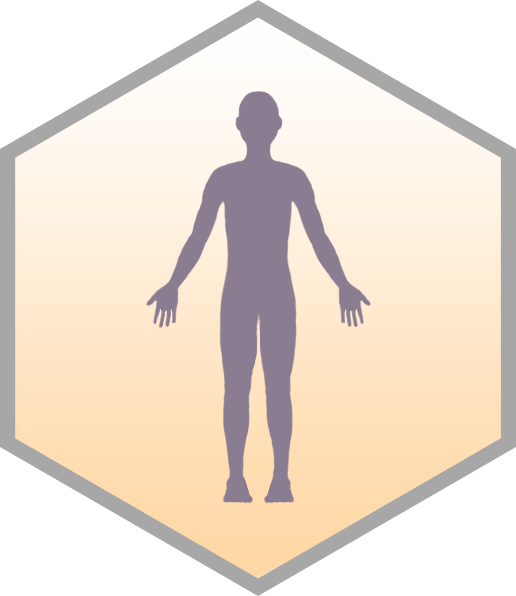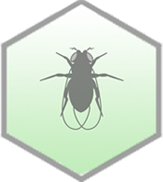THP1 / YOL072W Overview
- Standard Name
- THP1 1
- Systematic Name
- YOL072W
- SGD ID
- SGD:S000005433
- Aliases
- BUD29 20
- Feature Type
- ORF , Verified
- Description
- Nuclear pore-associated protein; component of TREX-2 complex (Sac3p-Thp1p-Sus1p-Cdc31p) involved in transcription elongation and mRNA export from the nucleus; involved in post-transcriptional tethering of active genes to the nuclear periphery and to non-nascent mRNP; contains a PAM domain implicated in protein-protein binding 2 3 4 5 6
- Name Description
- Tho2/Hpr1 Phenotype 1
- Comparative Info
-







Sequence
The S. cerevisiae Reference Genome sequence is derived from laboratory strain S288C. Download DNA or protein sequence, view genomic context and coordinates. Click "Sequence Details" to view all sequence information for this locus, including that for other strains.
- Summary
- THP1/YOL072W is located on the left arm of chromosome XV between DSC2 ubiquitin ligase subunit and SDH5 flavinylation protein; coding sequence is 1368 nucleotides long with 17 SNPs, 4 of which cause amino acid polymorphisms
Analyze Sequence
S288C only
BLASTN | BLASTP | Design Primers | Restriction Fragment Map | Restriction Fragment Sizes | Six-Frame Translation
S288C vs. other species
BLASTN vs. fungi | BLASTP at NCBI | BLASTP vs. fungi
S288C vs. other strains
Protein
Basic sequence-derived (length, molecular weight, isoelectric point) and experimentally-determined (median abundance, median absolute deviation) protein information. Click "Protein Details" for further information about the protein such as half-life, abundance, domains, domains shared with other proteins, protein sequence retrieval for various strains, physico-chemical properties, protein modification sites, and external identifiers for the protein.
- Summary
- Thp1p is 455 amino acids long, shorter-lived, very low in abundance
- Length (a.a.)
- 455
- Mol. Weight (Da)
- 52685.7
- Isoelectric Point
- 8.94
- Median Abundance (molecules/cell)
- 1358 +/- 474
- Half-life (hr)
- 7.7
Alleles
Curated mutant alleles for the specified gene, listed alphabetically. Click on the allele name to open the allele page. Click "SGD search" to view all alleles in search results.
View all THP1 alleles in SGD search
Gene Ontology
GO Annotations consist of four mandatory components: a gene product, a term from one of the three Gene Ontology (GO) controlled vocabularies (Molecular Function, Biological Process, and Cellular Component), a reference, and an evidence code. SGD has manually curated and high-throughput GO Annotations, both derived from the literature, as well as computational, or predicted, annotations. Click "Gene Ontology Details" to view all GO information and evidence for this locus as well as biological processes it shares with other genes.
- Summary
- Double-stranded DNA binding protein involved in mRNA 3'-end processing, mRNA export from nucleus, transcription elongation by RNA polymerase II promoter and transcription-coupled nucleotide-excision repair; localizes to nuclear envelope
View computational annotations
Molecular Function
- Manually Curated
- enables double-stranded DNA binding (IDA)
- enables RNA binding (IDA)
Biological Process
- Manually Curated
- involved in cellular bud site selection (HMP)
- involved in mRNA 3'-end processing (IMP)
- involved in mRNA export from nucleus (IMP)
- involved in nuclear mRNA surveillance (IMP)
- involved in post-transcriptional tethering of RNA polymerase II gene DNA at nuclear periphery (IMP)
- involved in transcription elongation by RNA polymerase II (IMP)
- involved in transcription-coupled nucleotide-excision repair (IMP)
Cellular Component
- Manually Curated
- located in nuclear envelope (IDA)
- located in nucleus (IDA)
- part of transcription export complex 2 (IDA)
Complex
Macromolecular complex annotations are imported from the Complex Portal. These annotations have been derived from physical molecular interaction evidence extracted from the literature and cross-referenced in the entry, or by curator inference from information on homologs in closely related species or by inference from scientific background.
Phenotype
Phenotype annotations for a gene are curated single mutant phenotypes that require an observable (e.g., "cell shape"), a qualifier (e.g., "abnormal"), a mutant type (e.g., null), strain background, and a reference. In addition, annotations are classified as classical genetics or high-throughput (e.g., large scale survey, systematic mutation set). Whenever possible, allele information and additional details are provided. Click "Phenotype Details" to view all phenotype annotations and evidence for this locus as well as phenotypes it shares with other genes.
- Summary
- THP1/YOL072W is a non-essential gene; null mutants are viable, slow-growing, and associated with several phenotypes that affect cellular functions and overall fitness. Mutants lacking THP1 exhibit an abnormal budding pattern and delayed cell cycle progression during the G1 phase, which can disrupt normal cell division and growth. These mutants display an abnormal cell shape, indicating potential structural issues within the cells. Cold sensitivity is increased, making them more vulnerable to lower temperatures, while competitive fitness is diminished, leading to reduced viability in resource-limited environments. Resistance to desiccation is decreased, further highlighting their susceptibility to dry conditions. Endocytosis is impaired, which may hinder nutrient uptake and cellular function. Furthermore, these mutants show increased heat sensitivity, indicating a greater susceptibility to elevated temperatures, and decreased resistance to hyperosmotic stress, which can affect their ability to survive in high-salt environments. The morphology of lipid particles is abnormal, potentially impacting cellular metabolism. Metal resistance is also decreased, and mutation frequency is increased, suggesting a higher likelihood of genetic instability. While oxidative stress resistance is increased, prion formation is decreased, indicating a complex relationship between stress responses and protein aggregation. Silencing mechanisms are diminished, which may affect gene regulation, and resistance to starvation is decreased, reflecting challenges in nutrient-scarce conditions. Vacuolar morphology is abnormal, which could disrupt cellular storage and waste management.
Classical Genetics
- null
- chromosome/plasmid maintenance: abnormal
- cold sensitivity: increased
- heat sensitivity: increased
- hyperosmotic stress resistance: decreased
- killer toxin resistance: decreased
- metal resistance: decreased
- mitotic recombination: decreased
- mitotic recombination: increased
- protein/peptide accumulation: decreased
- protein/peptide distribution: abnormal
- resistance to chemicals: decreased
- RNA accumulation: increased
- silencing: decreased
- sporulation efficiency: decreased
- sporulation efficiency: normal
- vegetative growth: decreased
- null
- budding pattern: abnormal
- cell cycle progression in G1 phase: delayed
- cell shape: abnormal
- chemical compound accumulation: abnormal
- chemical compound accumulation: decreased
- chemical compound accumulation: increased
- competitive fitness: decreased
- desiccation resistance: decreased
- endocytosis: decreased
- haploproficient
- heat sensitivity: increased
- hyperosmotic stress resistance: decreased
- killer toxin resistance: increased
- lipid particle morphology: abnormal
- metal resistance: decreased
- mitotic recombination: decreased
- mutation frequency: increased
- nutrient utilization: decreased
- oxidative stress resistance: increased
- prion formation: decreased
- resistance to chemicals: absent
- resistance to chemicals: decreased
- resistance to chemicals: increased
- RNA accumulation: abnormal
- sporulation: abnormal
- starvation resistance: decreased
- toxin resistance: increased
- utilization of carbon source: decreased rate
- vacuolar morphology: abnormal
- vegetative growth: decreased
- vegetative growth: decreased rate
- viable
- unspecified
Large-scale Survey
Interaction
Interaction annotations are curated by BioGRID and include physical or genetic interactions observed between at least two genes. An interaction annotation is composed of the interaction type, name of the interactor, assay type (e.g., Two-Hybrid), annotation type (e.g., manual or high-throughput), and a reference, as well as other experimental details. Click "Interaction Details" to view all interaction annotations and evidence for this locus, including an interaction visualization.
- Summary
- Thp1p interacts physically with proteins involved in transcription; THP1 interacts genetically with genes involved in transcription and chromatin organization
291 total interactions for 175 unique genes
Physical Interactions
- Affinity Capture-MS: 38
- Affinity Capture-RNA: 4
- Affinity Capture-Western: 26
- Biochemical Activity: 2
- Co-crystal Structure: 1
- Co-localization: 1
- Co-purification: 2
- PCA: 1
- Reconstituted Complex: 3
Genetic Interactions
- Dosage Growth Defect: 1
- Dosage Lethality: 1
- Dosage Rescue: 1
- Negative Genetic: 121
- Phenotypic Enhancement: 3
- Phenotypic Suppression: 1
- Positive Genetic: 36
- Synthetic Growth Defect: 18
- Synthetic Lethality: 23
- Synthetic Rescue: 8
Regulation
The number of putative Regulators (genes that regulate it) and Targets (genes it regulates) for the given locus, based on experimental evidence. This evidence includes data generated through high-throughput techniques. Click "Regulation Details" to view all regulation annotations, shared GO enrichment among regulation Targets, and a regulator/target diagram for the locus.
No regulation data available.
Expression
Expression data are derived from records contained in the Gene Expression Omnibus (GEO), and are first log2 transformed and normalized. Referenced datasets may contain one or more condition(s), and as a result there may be a greater number of conditions than datasets represented in a single clickable histogram bar. The histogram division at 0.0 separates the down-regulated (green) conditions and datasets from those that are up-regulated (red). Click "Expression Details" to view all expression annotations and details for this locus, including a visualization of genes that share a similar expression pattern.
Summary Paragraph
A summary of the locus, written by SGD Biocurators following a thorough review of the literature. Links to gene names and curated GO terms are included within the Summary Paragraphs.
Last Updated: 2010-06-07
Literature
All manually curated literature for the specified gene, organized into topics according to their relevance to the gene (Primary Literature, Additional Literature, or Review). Click "Literature Details" to view all literature information for this locus, including shared literature between genes.